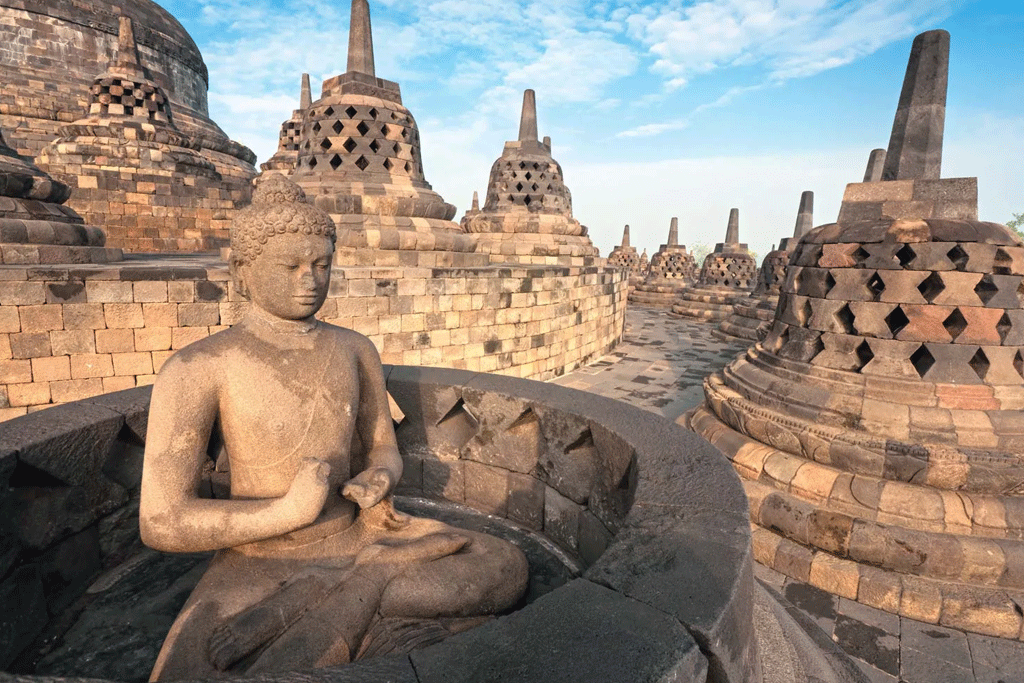Ram Abloh
Buddhism was from the beginning a monastic religious order. The Buddhist Saṅghas were the hub and entirety of what was distinctly Buddhism.
This centrality of the monastic organization is quite clear in the śaraṇāgati mantra:
1. buddham śaraṇam gacchāmi — I take refuge in Buddha
2. dharmam śaraṇam gacchāmi — I take refuge in the Dharma
3. saṅgham śaraṇam gacchāmi — I take refuge in the Saṅgha (i.e. monastic order)
So, from the beginning, when the monasteries were secure, Buddhism was secure. When the monasteries were in peril, Buddhism was in peril.
The Buddhist monasteries entirely depended on the protection and patronage of the government of the day. While there was cash flow from donations of private citizens, physical protection came from the ruler.
Prior to the Islamic invasions starting in the 8th century in northwestern India, Buddhism flourished under the magnanimous umbrella of the universal philosophy of Vaidika Sanātana Dharma.
The underlying culture of the land was derived from ancient Hinduism, and Buddhism just like other “heretical” sects like Jainism flourished, nurtured within the same Hindu cultural “mother matrix”.
After all, Buddhism was born from Hinduism. Buddhism is a specialization of one thread of the Hindu philosophical fabric. So, Buddhism flourished.
Even when the so-called Hindu resurgence took place under the inspiration of spiritual leaders like Ādi Śaṅkara after the 7th century, all of this was a completely spiritual transformation based on scholarly and intellectual debates, and not physical violence.
The alleged persecution of Buddhists by Puṣyamitra Śuṅga in the 2nd century BCE has no historical basis, and most modern historians (including leftist Romila Thapar!) reject the authenticity of these claims in a book of 2nd century CE called Aśokāvadāna. In fact, the Śuṅga dynasty has made great contributions to the Sanchi Stupa site.
The greatest testament to the wonderful coexistence of Hinduism, Buddhism and Jainism is seen in the cave temples of Ajanta, Ellora and Elephanta. All three sites are UNESCO World Heritage Sites. If a Hindu gets just one chance of visiting an ancient site, it should be one of these, or ideally all three of these.
In fact, Buddhism was still quite dominant even in the 10th-11th century in eastern parts of the country (present-day Bihar, Bengal, Orissa), during the heyday of the great logician and philosopher Udayanācārya. The fact that he was debating Buddhists is evident in the following legendary verse attributed to him addressing the deity Lord Jagannath of Puri:
• Apparently, one day when he wanted to worship at the temple, the doors were closed, and the priests refused to let him in. So, he addressed the Lord directly with these symbolic words:
• ऐश्वर्यमदमत्तोऽसि मामवज्ञाय वर्तसे । उपस्थितेषु बौद्धेषु मदधीना तव स्थितिः ॥
• “You are intoxicated due to your immense wealth and you are disregarding me. With the arrival of the Buddhists, your survival depends on me!”
• This can be seen as an indirect jab at the priests of the temple management, who apparently were oblivious of the threat of Buddhist takeover, and whose only counterbalance was the great debater Udayanācārya, who defeated them and saved the Jagannātha Kṣetra at Puri.
So, it should be clear that until the beginning of Islamic invasions, Buddhism was quite safe, secure and flourishing in the subcontinent.
Because of the extremely centralized organization of Buddhism, when the Islamic invasions began in Afghanistan, and the Hindu Shahi kings were defeated, the Buddhist monasteries were an easy target, and it resulted in the massacre of thousands of Buddhist monks and nuns. With the complete destruction of monasteries, Buddhism was destroyed. Whereas, even while Hindu temples were repeatedly attacked and razed to the ground, the resilience in the decentralized structure of Hindu society resurrected Hinduism again and again.
The infamous destruction of Nalanda and setting fire to its massive library by Bakhtiyar Khilji is another instance of the fall of Buddhism due to Islamic invasions in the east.
It is not a mere coincidence that Islam got a firm foothold in those regions first, where Buddhism had dominated in earlier times. The two regions where Buddhism was dominant were the northwest (Afghanistan, northwest Pakistan) and east (Bengal, eastern Bihar).
The fact that the Persian word for idolater is ‘but-parast’ (i.e literally worshipper of Buddha) shows that the Islamic invaders first encountered Buddhism in the northwest, and destroyed the Buddhist monasteries and temples, considering Buddhists as idolaters. (Sourse : Quaro)

Why did Buddhism almost Disapperince from India ?
Facebook Comments Box



